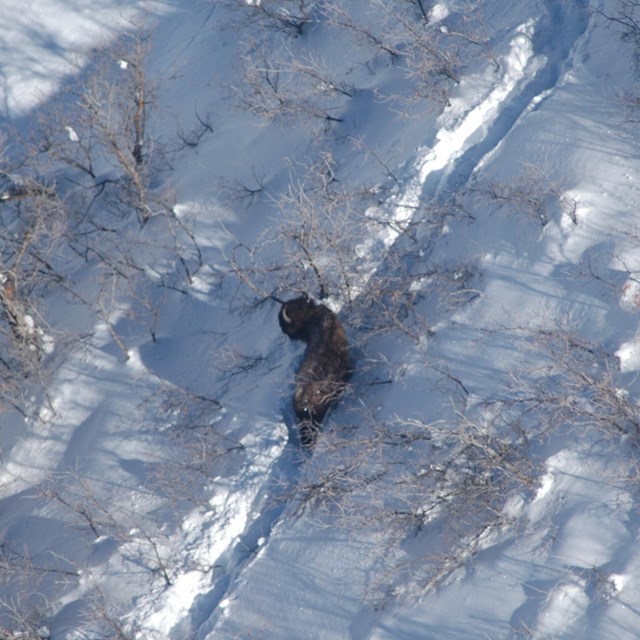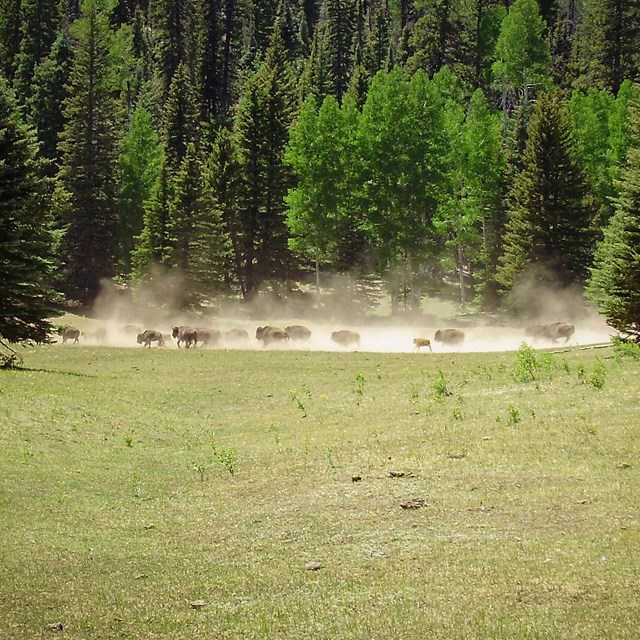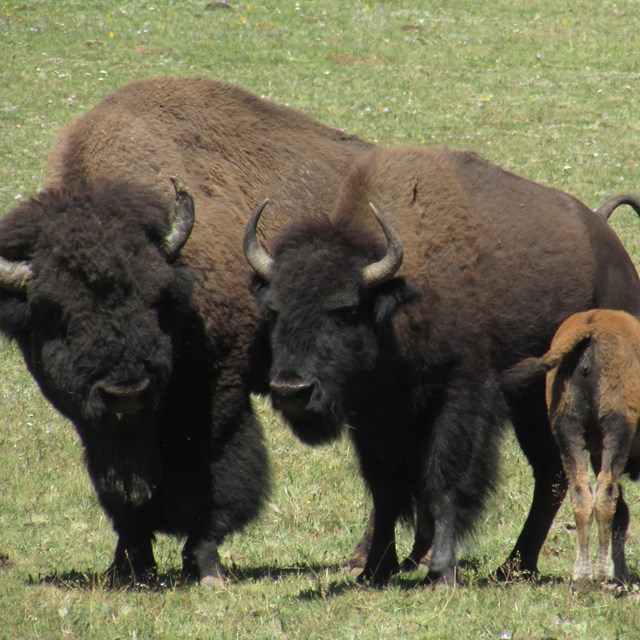TranscriptThere is no audio track since this is b-roll video. For descriptions of the visuals, view the audio described version.
Visit our keyboard shortcuts docs for details
Bison are only found on the North Rim of Grand Canyon National Park. They are wild animals and are unpredictable. We recommend maintaining a distance of 100 feet (30 meters) from them, and when they are within 100 feet of the road, it is recommended to view them from inside your vehicle. Please use established gravel or paved pull-outs to park vehicles completely off the roadway (all wheels right of the white line). Do not walk or park in the road. B-roll video by L/Cisneros, July 2022. 
NPS Map/ C. Talley Management of the Kaibab Plateau Bison Herd
Visit our keyboard shortcuts docs for details
This video presents an overview of bison management on the North Rim of Grand Canyon National Park. By 2025, the National Park Service will reduce the size of the overpopulated Kaibab Plateau bison herd through live capture and transfer to American Indian Tribes and lethal removal with Skilled Volunteers. Grand Canyon National Park is reducing the size to under 200 in order to protect park resources—including vegetation, water, and sacred archeologic sites—from the impacts of the bison. Kaibab Plateau Herd in Grand Canyon
Grand Canyon National Park News ReleasesRelated Articles |
Last updated: September 18, 2024



